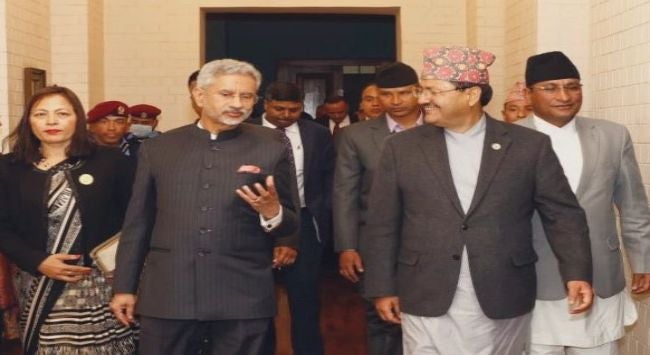Summary
Nepal and India recently signed an agreement that guarantees 10,000 megawatts of hydroelectricity exports from Nepal to India over the long term. The success of this agreement depends on several factors. It is in the interest of Kathmandu and New Delhi to consider these factors to ensure a win-win situation for both of them.
The seventh meeting of the Nepal-India Joint Commission, co-chaired by the foreign ministers of the two countries, took place in Kathmandu on 4 January 2024. The Joint Commission is the most important bilateral mechanism that seeks to address various issues between Nepal and India. In view of several significant issues between Nepal and India, some of which are controversial and awaiting resolution, the seventh meeting of the Joint Commission, held after a hiatus of three years, received much attention in Nepal.
The meeting touched on several aspects of bilateral cooperation and witnessed the signing of four agreements between the two countries. It chose to avoid discussing the controversies, perhaps with the sense that they could be spoilers for the ones in which agreements were likely. Of the four agreements that were signed, two deserve special mention. The first relates to the guaranteeing of long-term electricity export from Nepal to India and the second on India’s direct financing of community projects in Nepal. This paper briefly discusses the agreement in relation to electricity export.
The basis of the agreement on long-term electricity export was the announcement by India’s Prime Minister Narendra Modi during the visit by Nepal’s Prime Minister Pushpa Kamal Dahal to India in May-June 2023 that India would import 10,000 megawatts (MW) of hydroelectricity from Nepal over the next 10 years. Upon the endorsement of this proposal by the Indian cabinet in September 2023, the seventh meeting of the Nepal-India Joint Commission formalised it.
For long, hydropower has been considered a sector with tremendous potential for Nepal’s economic and social transformation. However, the development of this sector was at a snail’s pace for several reasons. In the last few years, hydropower development in Nepal gained traction, and Nepal’s current hydropower generation has reached around 2,800 MW in the wet season. A number of hydropower projects are in the development and planning stages, and it is expected that Nepal will be able to generate at least around 20,000 MW of hydroelectricity in the next 10 years. To prevent this hydropower from being wasted, there has to be a massive rise in domestic demand for hydropower or Nepal needs to find an external market to sell part of it.
It has been rightly argued by some stakeholders in Nepal that instead of exporting hydropower, the focus should be on the production and export of goods that demand high electricity usage. However, this might not be a good short to medium-term strategy. Due to low domestic demand, Nepal has surplus hydropower in the wet season even at present when the total hydropower generation has been just around 2,800 MW. Nepal might not see a massive rise in the domestic use of hydropower soon. Therefore, hydropower export is a wiser strategy for Nepal at least for the short to medium term. Moreover, the future of hydropower appears uncertain in the face of a rise in the intensity of droughts and floods due to climate change. Therefore, the agreement that facilitates the export of 10,000 MW of hydroelectricity from Nepal to India is a significant development, given Nepal’s huge trade deficit with India. India also stands to gain from a significant amount of hydroelectricity import since this would contribute to its climate goals through an increase in the share of clean and renewable energy in its total energy mix. Hence, it is essential to fulfil the requirements necessary to implement the agreement.
The success of the agreement will depend on several factors, with the two most important being as follows:
- Nepal’s ability to massively increase its hydropower generation; and
- The infrastructure for electricity transmission within Nepal and across the border.
It remains to be seen whether the agreement has covered these areas, particularly in the context that this calls for massive investment and India’s rules have a binding constraint in this respect.
India’s ‘Procedure for Approval and Facilitating Import/Export (Cross Border) of Electricity’ prohibits the import of electricity into the country from any generation project located in neighbouring country(ies) if the project is “owned directly or indirectly by any natural/legal personality(ies) whose effective control or source of funds or residence of beneficial owner, is situated in/citizen of a third country with whom India shares land border and that third country does not have a bilateral agreement on power sector cooperation with India.” This rule prevents the export of electricity generated from Chinese projects in Nepal to India. In fact, India has been reluctant to import electricity from Nepal even from a project that is fully owned by the Nepal government, but which was built by Chinese contractors by winning a globally competitive bid.
Nevertheless, the same clause in India’s rule with the above-quoted provision provides that the Indian power and external affairs ministries could make some relaxation in the provision. Whether such a relaxation has been or will be provided could become an important factor in the success or failure of the long-term agreement on electricity trade between Nepal and India.
. . . . .
Dr Puspa Sharma is a Visiting Senior Research Fellow at the Institute of South Asian Studies (ISAS), an autonomous research institute in the National University of Singapore (NUS). He can be contacted at puspa.sh@nus.edu.sg. The author bears full responsibility for the facts cited and opinions expressed in this paper.
Pic Credit: (4) IndiaInNepal (@IndiaInNepal) / X (twitter.com)
-
 More From :
More From :
-
 Tags :
Tags :
-
 Download PDF
Download PDF



